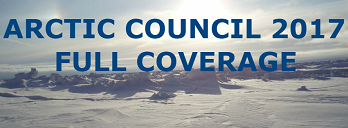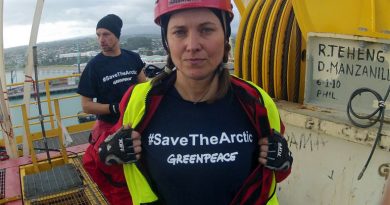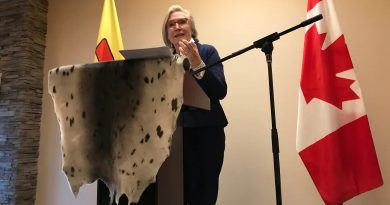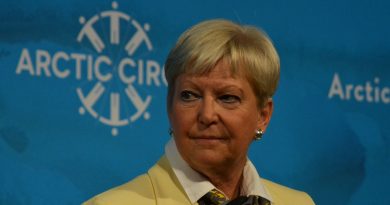Blog: Chairing the Arctic Council was hard work but a joy, says David Balton (Part 2 of 2)
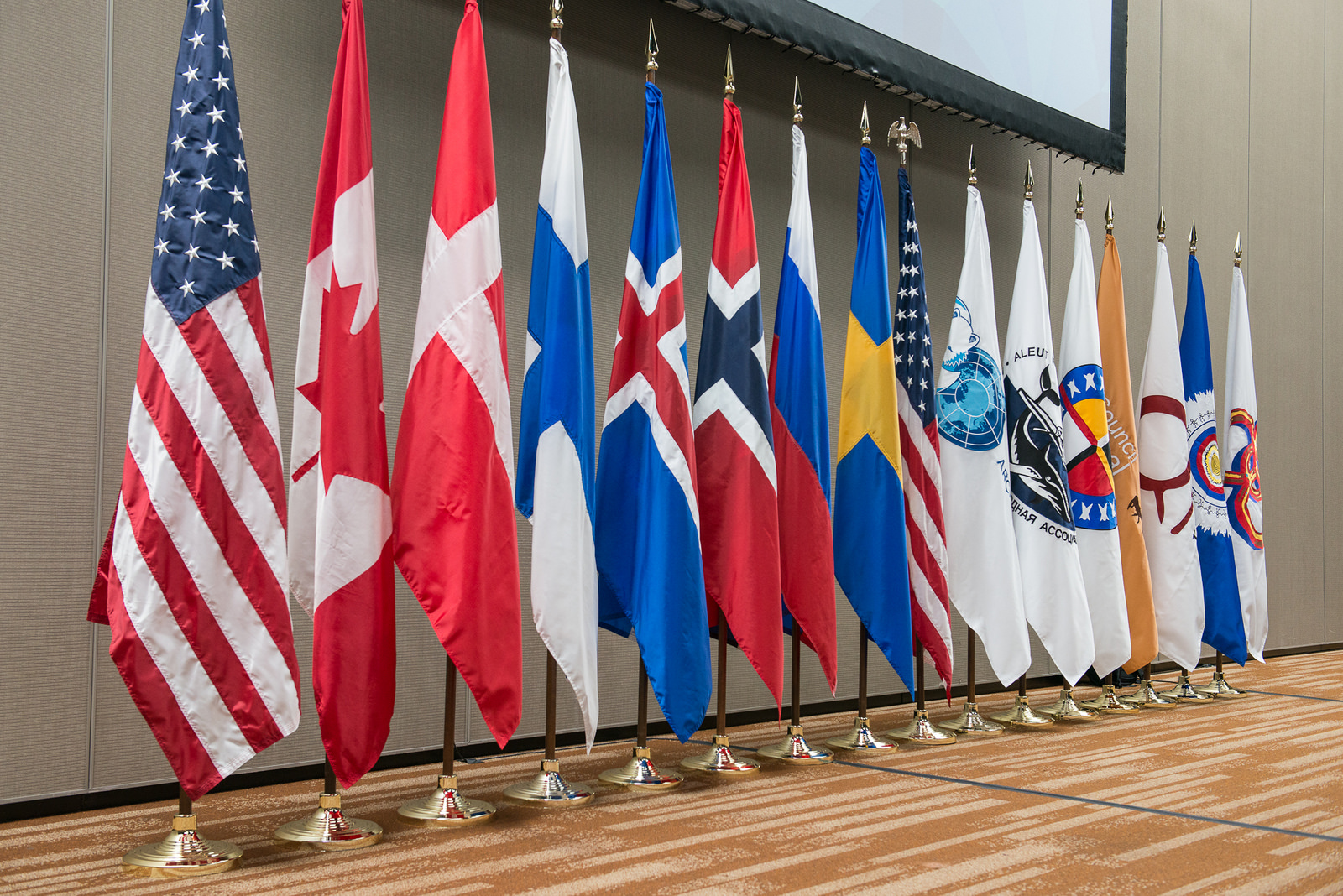
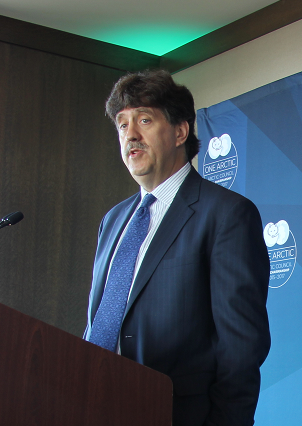
The Arctic Council Ministerial will be held in Fairbanks on May 11, marking the end of the United States’ two year Chairmanship of the forum.
In advance of the meeting, Eye on the Arctic blogger Heather Exner-Pirot spoke with Ambassador David Balton, Chair of the Senior Arctic Officials – the diplomats responsible for the day-to-day work of the Arctic Council.
In Part 1 of their conversation on Tuesday, Exner-Pirot talked with Ambassador Balton about the U.S. Chairmanship, Russia and what makes the Council unique.
In Part 2 below, Exner-Pirot talks with Ambassador Balton about chairing the Council, the increased international interest in the Arctic and his biggest challenge as SAO.
Heather Exner-Pirot: Comparing your expectations of the SAO chair role to what it has actually entailed, what has surprised you or taken you off guard the most?
David Balton: I learned a lot about the Arctic Council I did not know before. One area of enquiry, if I can put it that way, has to do with the way the Arctic Council is financed. During the past two years, as SAO Chair, I tried to get the Council to look harder at its financing. What I discovered along the way is that it’s a lot more complicated than I had previously understood.
Parts of the financial picture are reasonably easy to appreciate, that is the money for the Secretariat in Tromsø and the four other Working Group secretariats that exist elsewhere; that’s reasonably clear and pretty well documented. What’s less clear is the project and program financing. It comes from a wide variety of sources, a lot of it is in-kind and very difficult to quantify. A lot of the people who contribute their time and talent to the Arctic Council have day jobs and they do Arctic Council work essentially on the side. And then there are Observer states and other Observer organizations that provide some funding and similar contributions.
Where I think the Arctic Council needs to go is to develop a clearer and more predictable financing structure if it is going to meet the expectations of the international community heading in to the future, which is for the Arctic Council to do more.
I think related to that is the idea of strategic planning for the Arctic Council, which you brought up at the Portland SAO meeting. What does that look like in your vision?
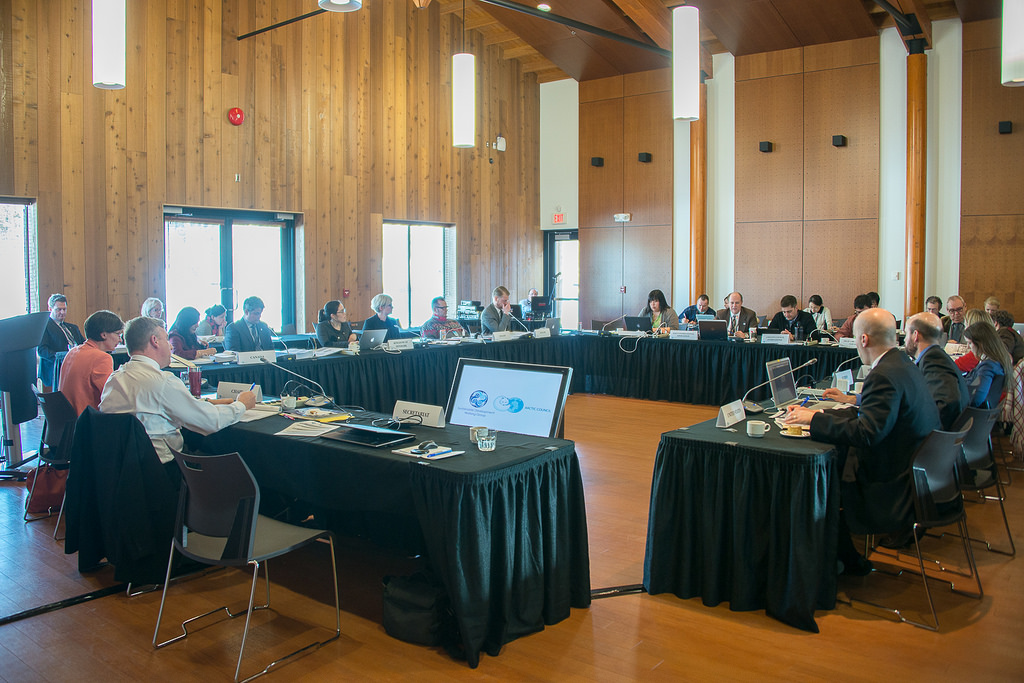
A number of the Arctic Council Working Groups have long term strategic documents, of one kind or another, already approved. One that was done just in the past year is the Sustainable Development Working Group. The Arctic Council as a whole has never done one. My view is that the pieces of the Arctic Council that have existed in semi-autonomy for a lot of the life of the Arctic Council are starting to work collaboratively more and more, and the issues on which the Arctic Council focuses cut across the Working Groups more and more. We need some way for the Arctic Council as a whole to set priorities on the work. One way to do that is to have a long term strategic plan. What we will have in Fairbanks in a few weeks is a commitment to do just that. By the end of the Finnish chairmanship there will be a first ever long term strategic plan for the Arctic Council.
What’s been the hardest part about chairing the Arctic Council?
This may say more about me than the Arctic Council. The advice I received from a number of others was to make my role as SAO Chair a full-time job, to do essentially nothing else for two years. I did not achieve that. I have had other responsibilities that I was not able to shed. The juggling of the Arctic Council work, which probably consumed about 75% of my time, with my other responsibilities was the hardest thing I had to face.
With regards to the structure of the Arctic Council, I think the hardest part relates to the Working Groups, most of which predate the establishment of the Arctic Council itself. A lot of them have their own rules, and sense of autonomy. But the demands of Arctic region are such that the Arctic Council needed, in this two year period and in to the future, to create a more coherent whole. We need an Arctic Council system that works in a more integrated way. We made some progress these two years towards that goal but there’s more to be done there.
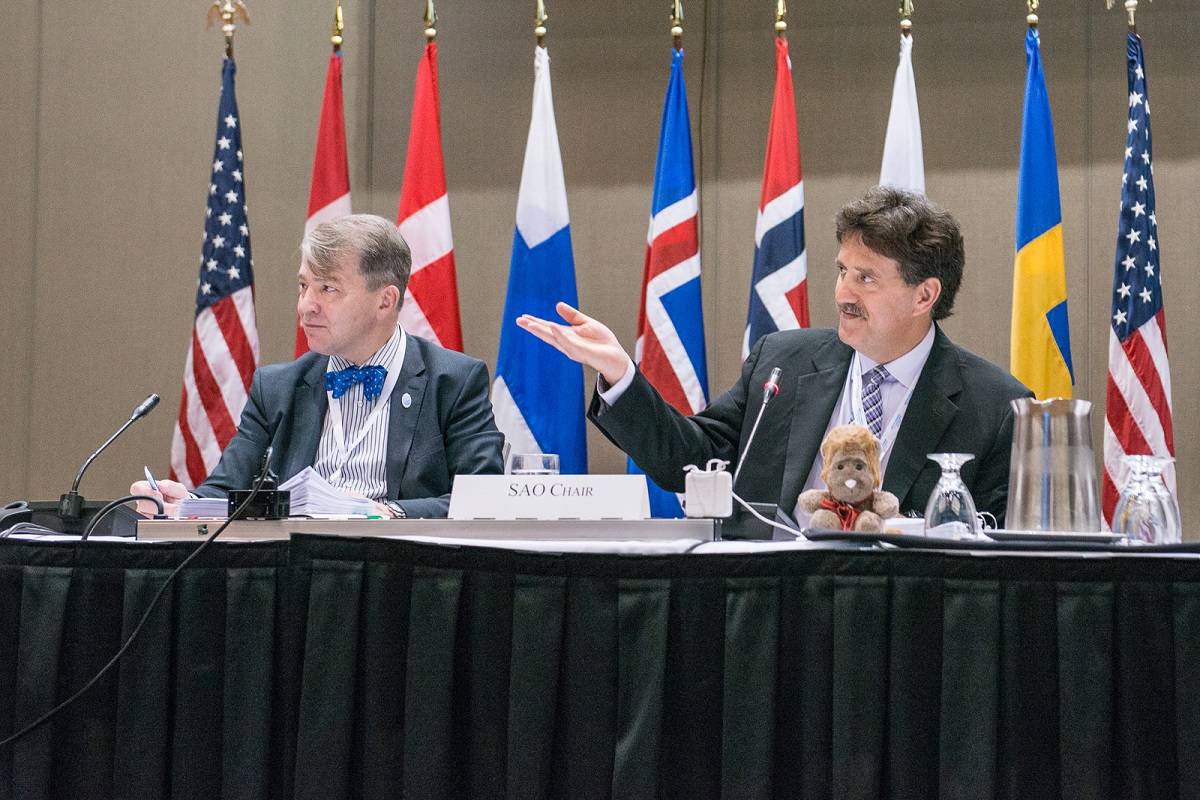
There are some who question my assessment of this; they think it’s better to have independence among various parts of the Arctic Council, and I appreciate that point of view. Nevertheless I feel as though we need more centralization and a little less devolution at this moment in history. Moving in that direction I think was the hardest thing we had to do.
Chairing the actual SAO meetings proved to be somewhat easier than I expected. I have been in a lot of international settings where achieving consensus was much harder than it was in the Arctic Council. I’ve chaired international processes where it was clear that a number of delegations had instructions to slow things down, or even to prevent agreements from occurring. That was certainly not the case in the Arctic Council the past few years. Yes, there are differences of view, but each of the governments involved, and each PP organization, is looking to find a way forward. There’s a willingness to listen to one another, there’s a feeling of give and take, respect around the table generally, that made chairing this particular group a joy.
During your time as SAO Chair, you were also chairing negotiations on an international Arctic fisheries agreement. What was the dynamic between those two responsibilities like?
It was tricky, because there was overlap but not complete identity among the groups. Some Arctic Council members countries were involved in Arctic fisheries negotiations – US, Canada, Denmark, Norway, Russia, Iceland – but because the EU member states have conferred competence over international fisheries management to the EU, Sweden and Finland could not participate in those negotiations, except through the EU. The Kingdom of Denmark has a different story because the EU’s competence in fisheries does not extend to Greenland. So Denmark participated in the fisheries negotiations in respect of Greenland and the Faroe Islands.
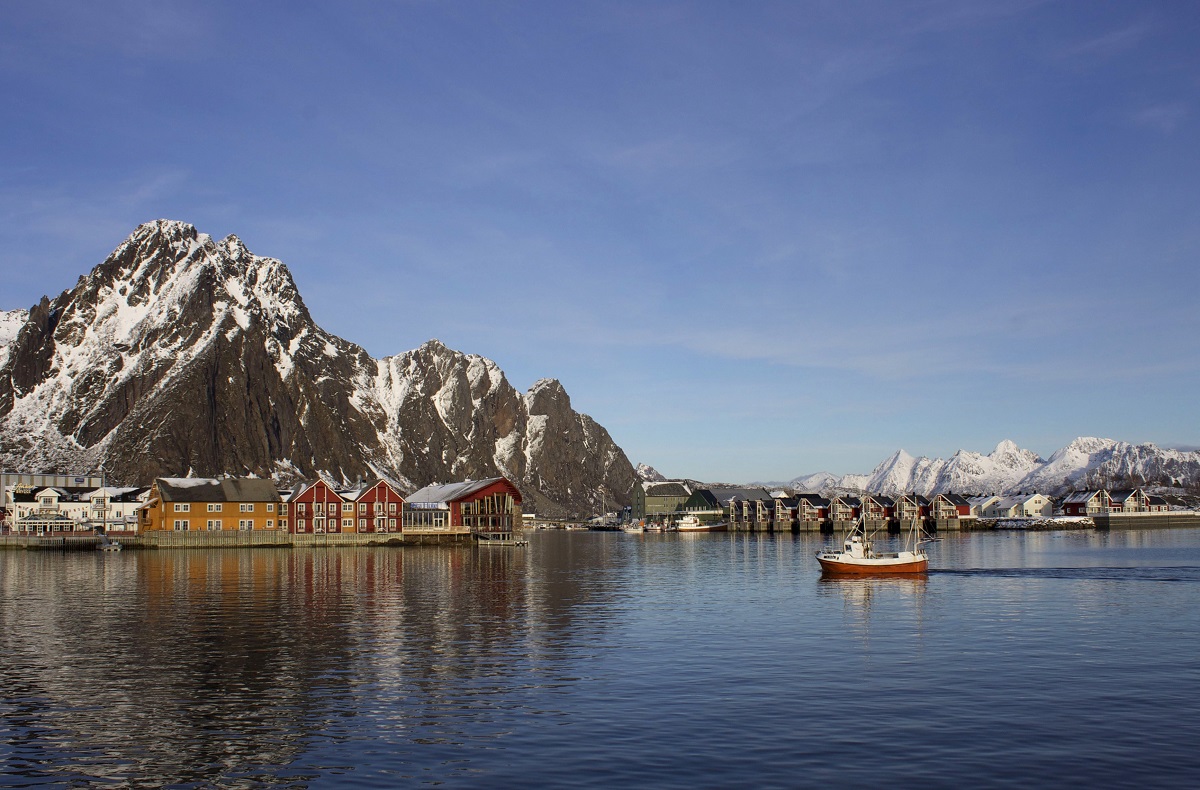
Under international law, other nations have a right to fish in the Arctic’s high seas, and the ones who might have an interest in actually fishing in the Central Arctic, most likely, are China, Japan, and South Korea, though they are just Observers in the Arctic Council. So keeping all these players straight and having these two processes moving forward successfully in parallel, as I said, was a little tricky.
What do you think has been the most common misconception about the Arctic Council – the thing you found you had to constantly educate people about as SAO Chair?
There are a couple of different misconceptions I’ve encountered. One misconception is that the Arctic Council deals with military security issues, and that it needs to do so because the Arctic is at risk of armed conflict. Both elements of that view are, I think, quite wrong. First, the one topic that is excluded from the mandate of the Arctic Council is military security issues. Second, I don’t see the Arctic region as at serious risk of armed conflict. Getting that message out there, and explaining the role of the Arctic Council on this topic, is an ongoing effort.
The other misconception is that the Arctic Council is somehow a regulatory body that adopts binding rules for, say, the way oil and gas development has to occur, or other human activities are to be regulated. It is not, as you know. There are international bodies that do adopt binding rules, like the International Maritime Organization. The Arctic Council is not one of them. Making people understand that difference has been part of my job.
I’ve perceived that maybe the Asian states, in particular, saw the Arctic Council as a place to promote just those kinds of things. Do you think the Asian states have a better understanding now of the constraints or the narrowness of the Arctic Council’s role?

I take exception to that – I don’t think the Arctic Council is constrained or narrow. The only topic not in the Council’s mandate is military security. In principle any other topic can be brought to the Arctic Council table.
I think the Asian states that became Observers only in 2013 at the Kiruna Ministerial have learned a lot about the Arctic Council in the last four years, and have come to appreciate what it does and doesn’t do. Their interest in becoming Observers, I believe, has more to do with wanting to be perceived as players on Arctic issues. They have a sense, and I think a well-founded sense, that the Arctic matters. A lot of that is driven by climate change, both its negative consequences and its potential benefits in terms of opening up shipping, hydrocarbon development and other economic activities, and the Asian states want to be at the table at least as an Observer for reasons related to those dynamics.
For those European states that have been Arctic Council Observers for a long time, I think it is more about science. A lot of them have robust scientific programs related to the Arctic, about climate change in the Arctic in particular. They see their Observership as giving them some insight into what the Arctic states are thinking about science. They participated very actively in the Arctic Council science agreement, hoping to obtain benefits from that agreement, for their scientists. That’s a prime motivation for them.
As we sit here today, 20 applications for new Observer status – four states, six intergovernmental organizations, and ten non-governmental organizations, wish to become Observers. At the Ministerial in Fairbanks, my expectation is that some will be admitted and the ranks of the Arctic Council are likely to grow. I think it’s a testament to the ongoing sense of the Arctic Council as something to be involved in if you care about the Arctic at all.
Did you miss the first part of this interview? You can read it here.
The Arctic Council chairmanship moves from the United States to Finland on May 11, 2017 in Fairbanks, Alaska. Eye on the Arctic’s Eilís Quinn along with EOTA media partners and contributors will be bringing you stories, interviews and analysis leading up to the handover.
→ Read our full coverage here!

